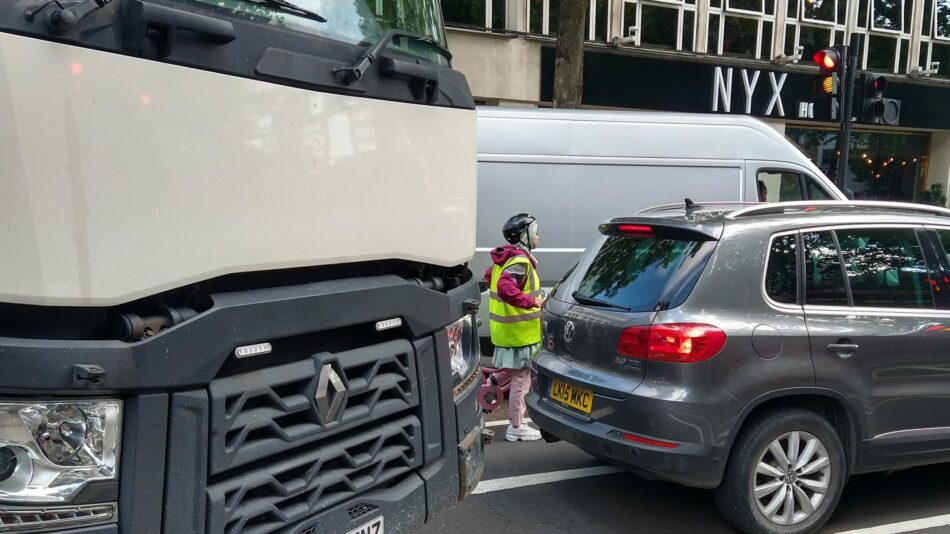

The London Cycling Campaign today launches its new “Dangerous Junctions Report: Why Are We Failing To Achieve ‘Vision Zero’, Boost Active Travel And Trigger Mode Shift?” calling for London, the UK and indeed everywhere to “put safety first” in the battle for roadspace and capacity, in order to avoid the lives lost on our streets annually and to help trigger mode shift away from private motor vehicles towards more sustainable, healthy and safer alternatives.
The report, which is in part based on a summit of renowned UK planners, modellers and engineers that happened earlier this year, features 13 recommendations as summarised below. It is launched today with a presentation at national active travel conference, Cycle City: Active City in Sheffield.
Among them are: to use best practice and new design quality standards now in force nationally from the DfT and Active Travel England; embrace innovative approaches to road design, including using temporary materials and trialling schemes before full implementation; and making the current system of lobbying and consultation around changes to roads far more transparent for all stakeholders. The report also recommends a new, independent public body to assess junction designs and other road (safety) schemes to ensure they are achieving what is needed and to provide centralised design expertise and support – possibly under Active Travel England.
“For too long, politicians have told us they want to save lives on our roads – yet their inactions have spoken louder than word, Year after year notoriously dangerous junctions that over and over kill and maim are left untreated, despite us knowing what exactly what is needed to make them safe. If we want to achieve a ‘Vision Zero’ safer roads system, if we want more people to walk, cycle, use public transport, if we want to cut carbon emissions fast, we need to be far bolder and move far faster on building safer junctions. This report shows the ways forward for politicians and highways authorities serious about doing so.” Dr Ashok Sinha, Chief Executive, London Cycling Campaign
The full list of recommendations:
The report also highlights why delivery of safer junctions is so slow, how current design approaches in the UK are unsafe, the cost of unsafe junctions beyond loss of life, and examples of UK ‘best practice’ such as ‘Circulating Cycling Stage junctions’ found in Manchester and Waltham Forest, bus gates such as at Bank Junction and ‘Dutch-style’ roundabouts such as at Fendon Road, Cambridge.
The report is launched alongside a series of new images created using new design and visualisation software ‘BetaStreets’ of one of London’s most dangerous junctions at King’s Cross showing how dangerous junctions could be improved for safety and to enable more people to walk, wheel, cycle and use public transport in the city.
The full report is available here. For more on our Dangerous Junctions campaign, click here.